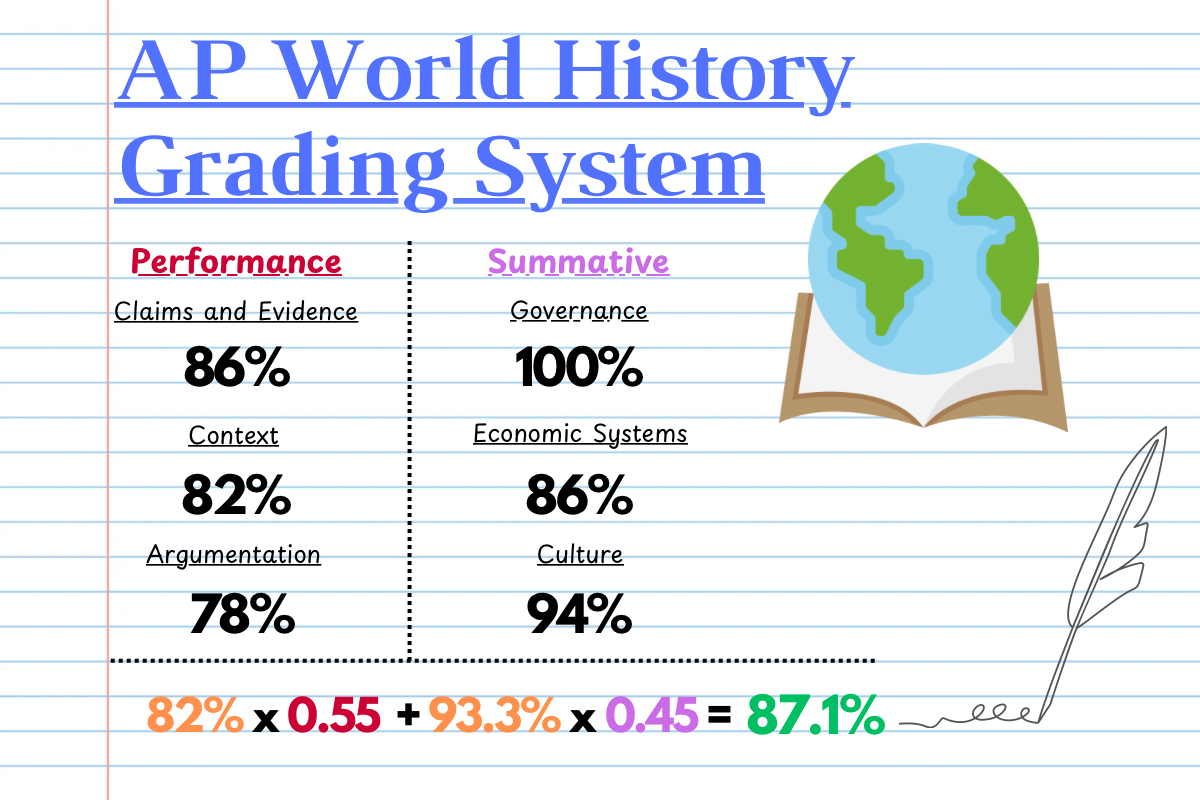Coppell High School sophomore Hrishikes Tandri sits in class, examining the slideshow about the AP World History grading system, lost.
“I checked my grades for the first time and was completely confused on how it was sorted,” sophomore Hrishikes Tandri said. “The AP World History grading system is confusing because of how different it is from different classes.”
AP World History adopted the standards-based grading system, separating student grades by curriculum standards. This system is additive, generally starting low and ending higher. The standards based grading system slowly adds different categories of grades until they reach a ceiling. Tests, such as document based questions (DBQs) and short answer questions (SAQs), yield a higher max grade on these standards.
This grading system is based on the following high performance learning standards: argumentation, claims and evidence, context, governance, economic systems and culture. If a student scores low on context, they can improve by studying format and implementing exceptional context into their short answer questions.
“The grading system can provide growth opportunities,” AP World History teacher Mike Vitale said. “Students have opportunities to grow, but if they miss the points it can be confusing.”
There are many opportunities for students to reach a base grade of 86. With multiple choice questions and short answer questions, students can add up their grade until they reach the grade appropriate for their level.
In the regular CHS grading system, assignments are graded individually with only one chance to reach the maximum grade. While it shows how the student may have performed on an individual assignment, it does not necessarily show what specifically the student can improve on.
“Keeping tabs on my normal classes quickly gets confusing,” Tandri said. “I see grades on things I have already done and I feel like I can’t really improve anymore.”
There are several ways the AP World History grading system can be effective for dedicated students to improve their capabilities. The separation of the grades by standard makes it clear to the students what they need to improve on, and there are many opportunities for improvement of grades.
According to AP World History teacher Connor Blake, the system helps teachers identify the most relevant parts of the curriculum to give students work related to these areas, as well as providing insight into what to improve on as a class.
“The standards based grades are split into sections, in which students can identify subjects they struggle with, and teachers can see what students may struggle with in general,” Blake said. “This makes the grading system more transparent for everyone involved.”
With the standards based grading system, students get multiple opportunities to improve their grade.
“It saved me on many occasions,” sophomore Bariq Bhatti said. “If I had a bad grade on a quiz, but I have 90s in all categories, then my grade would not go down at all compared to if I got a bad grade in a normal grading system.”
Follow @CHSCampusNews on X.











